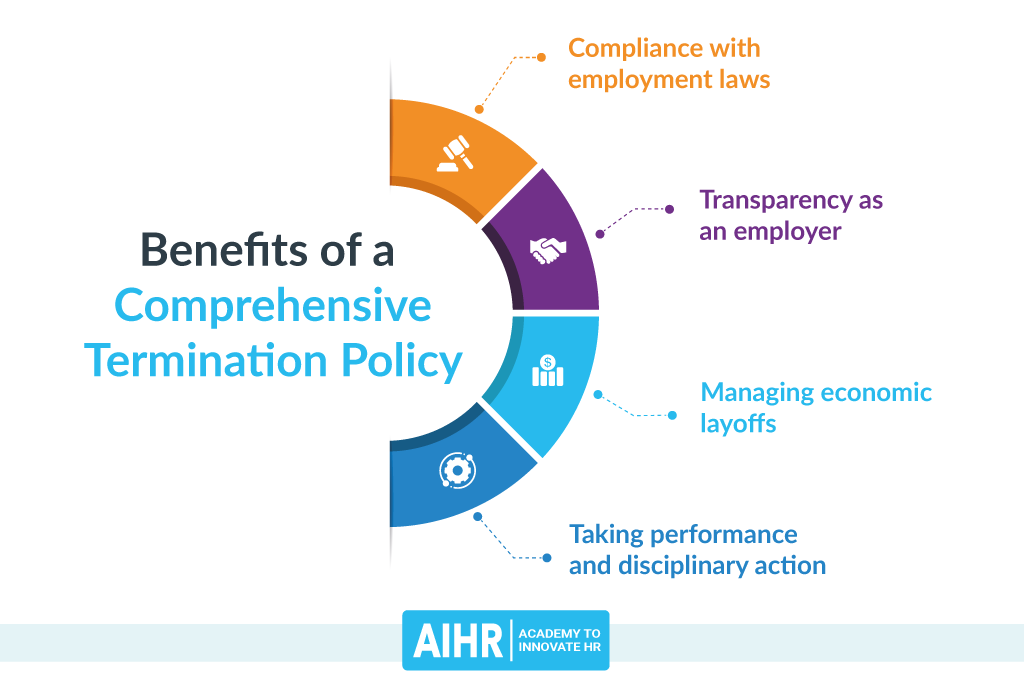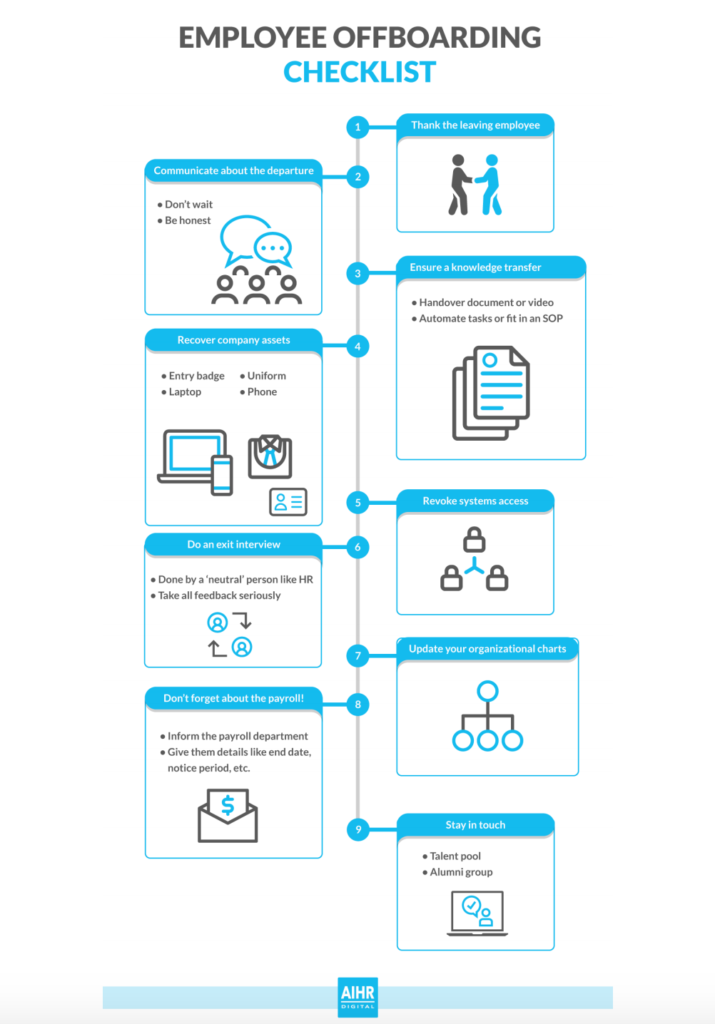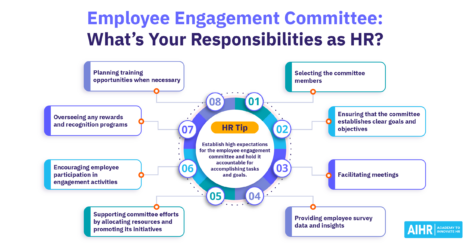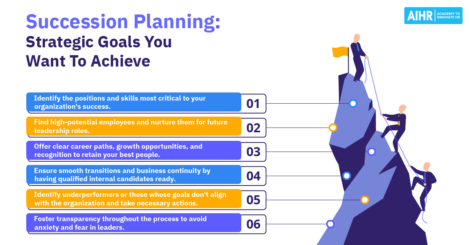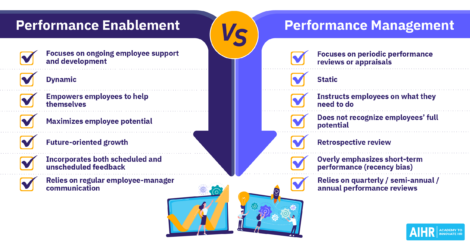Termination Policy: What Do You Need to Include?

Despite the efforts most employers make to retain their employees, sometimes this relationship must come to an end. All employers need a written employee termination policy to clarify what constitutes the end of the employment agreement. What are the key points your termination policy and exit procedures should include? What considerations do you need to make to develop a robust termination policy? How can your organization protect itself and ensure that the termination occurs without any drama?
A comprehensive termination policy helps employers to streamline this process so it doesn’t disrupt the business negatively — including affecting morale. It also helps employees understand what they can expect before, during, and after they separate from the company.
Contents
What is a termination policy?
Why does your organization need a termination policy?
What should a termination policy include?
Other considerations for your termination policy
What is a termination policy?
The simplest definition of an employee termination policy is a written document that details how employee termination happens inside your organization. It outlines each step of the termination process and provides guidelines for management and human resources staff. This information needs to be clear and upfront so that employees understand how and why they may be terminated from employment. The policy also clears up how they may voluntarily resign from their job if they choose to at some point in the future.
It is awkward enough when an employee leaves an organization for both human resources and the departing employee. The termination policy provides structure so that it’s less stressful. It also addresses expectations for all involved. For example, an employee understands that they will be required to be escorted off business premises and to their vehicle on their last day as a measure of courtesy (and security); not as an insulting gesture.
Just as an organization has written policies to address various aspects of employment, a termination policy communicates how this process takes place in a professional work environment.
Why does your organization need a termination policy?
From a legal standpoint, having a written employee termination policy is critical for protecting your organization from liability and risks associated with losing people. From an ethical perspective, the termination policy also details how an employee subject to involuntary termination is to be managed with respect.
Here are some reasons why your organization needs a formal employee termination:
1. Compliance with employment laws
Companies have enough on their plates today as they focus on building effective and productive teams. Many have gone global or have workers who are dispersed remotely. Having a written employee termination process and policy helps employers cover critical legal aspects, such as what constitutes voluntary termination vs. involuntary termination. This can help avoid wrongful termination claims and lawsuits from rearing their ugly heads.
2. Transparency as an employer
Since termination is a sensitive issue, it can create a strong emotional response from employees. This includes the affected employee as well as those left behind to pick up the extra work. In order to make this transition less traumatic for all, employers can make sure they are as transparent as possible with their termination policy.
Even if you have to handle a termination via a virtual meeting with a remote employee, “Make sure to be honest and empathetic,” advises Lindsay Witcher, VP of practice strategy at Randstad RiseSmart. She adds, “be transparent, detailed and as clear as possible with your message.” This will help prevent misunderstandings.
3. Managing economic layoffs
One of the most difficult times in an organization is when employees must be let go due to lack of work. The economy can impact any business, making it necessary to lay off a portion or an entire workforce. The written termination policy needs to include information relevant to The Worker Adjustment and Retraining Notification Act (WARN). The Act requires employers of 100 or more employees to provide 60-days advance notice of plant closings or layoffs of 50 or more workers at once. Check the relevant legislation in the countries you operate in.
4. Taking performance and disciplinary action
A written policy reinforces positive performance and details the consequences of negative actions. As part of an organization’s policies, the performance and disciplinary process must also include information about employee termination.
For example, it’s standard practice to issue a verbal warning for a first work offense. Then, if the problem persists, follow with written notices. While termination should be a last resort, chronic negative performance or behavior that puts other employees and the business at risk can warrant an employee’s termination.
What should a termination policy include?
A well-written employee termination policy comprises the information that human resources and management need to successfully process the end of an employee’s relationship with the company. You need to incorporate certain elements in the employee termination policy and procedures, which should include:
Explanation of different types of terminations
It’s essential that employees understand the various types of employment termination and what this means to their career. For example, an employee who leaves under voluntary termination can do so at any time provided they give reasonable notice to the employer. It’s important to communicate this for business continuity as well as keeping the door open for possible future re-employment opportunities after resignation.
Employment interruptions, such as furloughs, the completion of a contract, retirement, reduction in work, family or personal medical leaves, etc., should not harm employees long-term.
It’s important to note, if an employee ‘no shows’ for a period of a few days, this is considered job abandonment and/or voluntary separation. It would make the employee ineligible for rehire.
When it comes to involuntary termination due to employee insubordination, breach of contract, regular poor performance, risky or negative behavior, workplace policy breaking, or illegal activity – these are no fault of the employer. The termination policy needs to outline the steps to be taken regarding employee coaching and disciplinary action. This can include possible support by the company to address substance abuse issues or barriers to good performance.
The basics of the termination policy
Termination policies must also include core information such as who the policy covers, how warnings happen, and what the process for each termination is. The policy should also include who is responsible for managing the employee termination, documenting it, and to what extent HR should be involved initially. This can depend on the type of termination required, but the policy should outline the basics in a comprehensive way.
Consider the experience of both the employee and the management team. What do they need to know, so they don’t put themselves or the company in jeopardy? One example that comes up often is how much notice a departing employee should give to their employer. Employees may have another job offer and cannot give the standard two-week notice. How is this handled so that the employee may leave on good terms? What rights do employers have if they must terminate an employee for disciplinary reasons? The policy should address all these aspects.
The termination and offboarding checklist
One useful component that all employee termination policies can include is the offboarding checklist. This helps define the steps and guidelines for the employee’s final time on the job, including their last day. Just as you take the time to onboard new hires, you also have a structured process for easing them out of the company. The offboarding checklist can include when and how to return company property (uniforms, cell phones, vehicles, keys, security pass, handbooks, etc.).
Communicate what is allowed as far as “going away” parties for employees leaving to pursue other career aspirations. Have an exit interview scheduled with the employee to capture information that is useful for retention efforts. Finally, have the employee’s final day mapped out. This can include removing access to the company computer system and an escorted leave by security.
Financials and benefits
In many cases, a company may choose to offer a severance package to the terminated employee. This can help soften the blow of an involuntary termination due to a company layoff or closure. The standard severance package includes a month’s salary and access to the company-sponsored benefit plan until COBRA kicks in. It could also include other perks, like a cash bonus or stock options. It also helps to have a reference letter prepared to give to the employee.
Prepare a severance package letter written for the employee so they can review it and agree to the terms. Here is a great example of a severance agreement.
Additional support
The COVID-19 pandemic put many employees in a unique predicament. They were either required to work from home, or they were not able to perform their work anymore due to the nature of their tasks. Some states had generous unemployment benefits, which allowed individuals to wait things out. Others had delays and did not provide the financial support needed to cover even basic expenses. These workers were forced to seek other employment options — a challenging prospect in the middle of a pandemic.
Suppose this is the case with your company. In this instance, you can give employees the option to cut ties but in order to protect their career reputation, offer a severance package that is more generous and provides adequate medical benefits. Depending on your budget, you can offer severance based on years of service or performance metrics. Airbnb went the extra step when they offered all employees 14 weeks of severance pay. The company also covered the cost of medical insurance for a year after they were laid off.
Outside of the pandemic, another type of support that can improve your company’s reputation and make terminations go smoother is the addition of career outplacement benefits. This involves providing up to 6 months of career counseling and support to find a new job.
You will also want to prepare a communication plan for your remaining team. Let them know what they can expect and what duties or tasks need coverage until a replacement can be hired.
Other considerations for your termination policy
We would be remiss if we did not mention a few additional pointers for ensuring the termination of employment policy is well-designed and managed. Be mindful of these factors as you develop your organizational employee termination process.
- Make the termination policy accessible to all employees. You can easily add the policy to your employee handbook so that employees can access this information 24/7. Your handbook can be in digital format included on a secure company Wiki or file-sharing network. Review the policy annually and update as needed.
- Treat employees with compassion, respect, and dignity. Regardless of why an employee is terminating employment, this is not the time to be rude to them. All human beings deserve respect and empathy. This can make all the difference in an employee’s life as termination can be emotional. The more HR and management can provide a positive departure, the less likely the employee may think or behave negatively afterward.
- Choose the best time and place for the termination. Whenever possible, select a Friday for the day of termination, and wait until the end of the workday when other employees are leaving or have left. Have a meeting in a conference area nearest the building exit and get another employee to gather up the employee’s belongings as a courtesy. Kathleen Bonczyk, founder and executive director of the nonprofit Workplace Violence Prevention Institute told CNN: “The point of termination is perhaps the greatest opportunity for deadly workplace violence,” adding that the experience is “almost like a divorce from a family since Americans today tend to spend more time at work [with coworkers] than they do at home.”
- Document the entire process. As an employer, you must anticipate that the employee being terminated may try to retaliate with complaints or a lawsuit. Recording the necessary documentation is critical. Whether the termination is voluntary or involuntary, created due to a layoff or closure, temporary or permanent — you need to document every aspect and have employees sign off on items. You are keeping a record of all communications, performance reviews, disciplinary actions, and other elements that make a case for termination.
- Define the rehire policy after termination. If your company allows the rehiring of employees who have left the company, you will want to make sure to outline the eligibility and process in your policy. Most organizations only allow rehires if an employee left on good terms and provided the required notification.
Wrapping up loose ends
Employee termination isn’t exactly the most pleasant HR process. A solid termination policy helps you and your employees navigate and clarify this process and the steps in it. It also helps to protect the organization from frivolous claims and lawsuits created by vindictive former employees.
If you want to future-proof your HR skill set and develop new HR competencies, check out our All You Can Learn Certification Program!
Weekly update
Stay up-to-date with the latest news, trends, and resources in HR
Learn more
Related articles
Are you ready for the future of HR?
Learn modern and relevant HR skills, online





